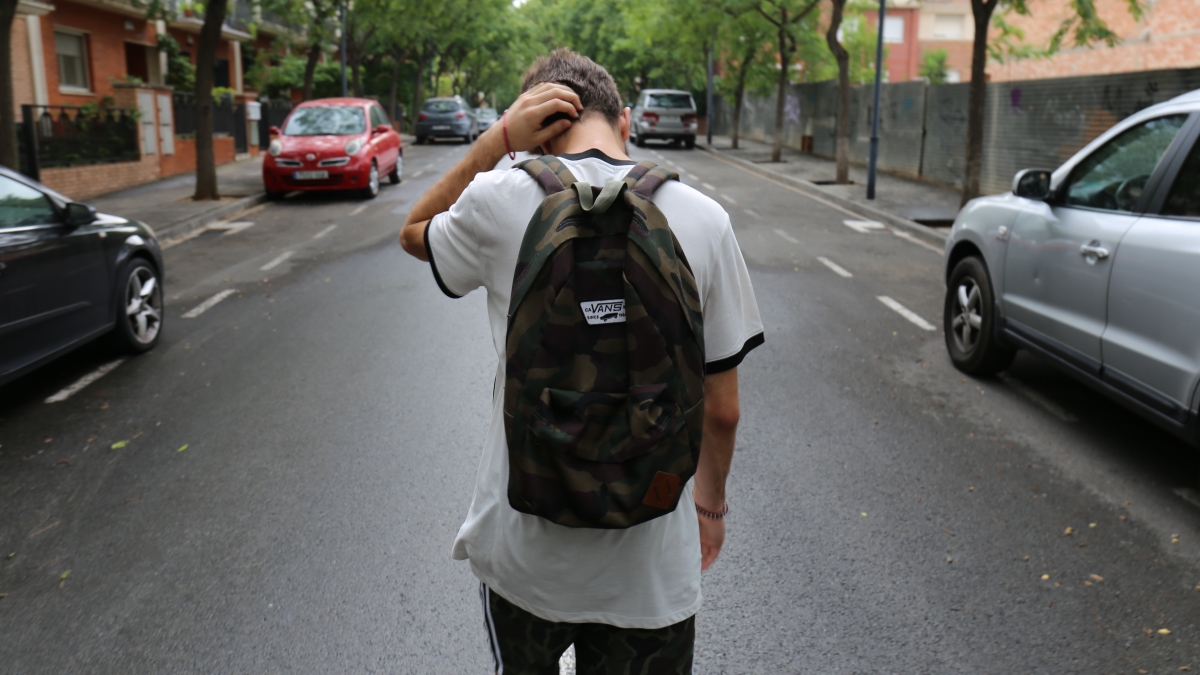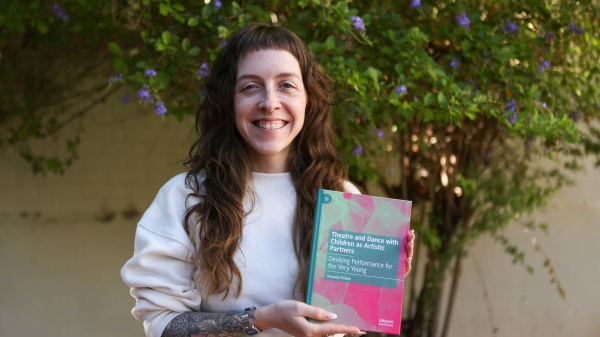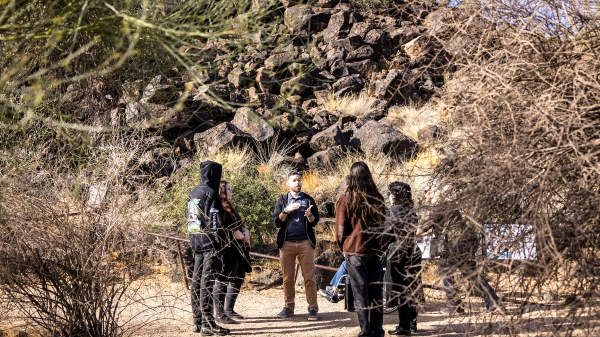Communication scholars address challenges, solutions regarding bullying

Photo courtesy Unsplash
October is National Bullying Prevention Awareness Month, a monthlong observance to educate and raise awareness about bullying and cyberbullying prevention.
Bullying affects many people and can happen anywhere — at school, online or even in the workplace.
Its prevalence is staggering, with one in five kids between the ages of 12–18 revealing that they have been bullied during the school year.
Further, nearly half of all workers experience bullying, with one in 10 U.S. employees enduring constant abuse and 30% to 40% encountering it at some point in their careers.
Not surprisingly, bullying can lead to negative health outcomes. According to the Centers for Disease Control and Prevention, bullied students have an increased risk of mental health issues such as depression or anxiety, which can lead to sleeping problems and impact their academic progress.
Scholars in the Hugh Downs School of Human Communication at Arizona State University — including Assistant Professor Joris Van Ouytsel, Professor Laura Guerrero, Associate Professor Jonathan Pettigrew and Professor and school Director Sarah Tracy — have spent years researching bullying. Here they share some words of advice on communication and bullying prevention.
Editor's note: The following interview has been lightly edited for length and clarity.
Question: How do researchers define bullying and how is it different from other mean or aggressive behaviors?
Van Ouytsel: Researchers distinguish bullying from other aggressive behaviors using three criteria. First, with bullying there's a power imbalance between the perpetrator and the victim, encompassing physical (e.g., the perpetrator is stronger than the victim), social (e.g., the perpetrator is more popular in the peer group), or even technological differences (e.g., the perpetrator knows how to abuse technology to bully the victim).
Second, bullying is not a one-off event but a consistent pattern of hurtful behavior that unfolds over a longer period of time. In the case of cyberbullying, however, a single post or comment can also be republished and persist for a longer period of time.
Finally, bullying requires a deliberate intent to harm the victim, setting it apart from innocent jokes, inappropriate remarks or misunderstandings. The intended harm is often emotional rather than physical.
Q: What is cyberbullying and how is it different from traditional face-to-face bullying?
Van Ouytsel: Cyberbullying is bullying through the internet or the mobile phone. Victims of cyberbullying often struggle to escape as bullies can harass them and invade their private spaces even when there is physical distance between them. Anonymity can make it hard to identify and confront the perpetrators. Unlike traditional bullying, cyberbullying has the potential to take place in front of large online audiences, with messages that can be easily copied and forwarded. This often makes it difficult for victims to stop the spread of hurtful posts. As opposed to in-person bullying, cyberbullying often goes unnoticed by teachers and parents, as it occurs outside of the school environment. Additionally, cyberbullies may not see how badly they are making someone feel, which sometimes makes it difficult for them to realize the impact of their actions.
Q: What factors contribute to bullying in online environments, and why are online settings conducive to such behaviors?
Guerrero: One significant factor is something called the disinhibition effect. When applied to cyberbullying, this effect occurs when people feel freer to criticize and make especially harsh comments online — harsher than what they would say to a person in a face-to-face interaction. This happens in part because they are behind a screen and can either be anonymous or don’t personally know the person they are bullying.
On social media sites, there can also be an intensified bandwagon effect where people see others making negative comments and jump in to do the same. It’s hard to imagine 100-plus people circling around someone in person and shouting out insults and other derogatory statements, but you see that much negativity directed at people on social media all the time.
Cancel culture is another example where people, many of whom don’t even know each other, band together to punish someone online, often by making hostile statements and shunning them. Some people don’t think negative comments will affect someone that much if made online, yet the sad truth is that bullying hurts whether in person or on a screen.
Q: What measures can parents and schools take to help prevent their children from becoming bullying victims?
Pettigrew: To really help with bullying that is happening outside the home, parents need to connect with their kids. A parent may not know about what's happening unless their child reports what's going on or the parents are staying closely connected with the emotional lives of their kids. Research shows that most kids and teenagers look to their parents for guidance and that their parents really do impact their decisions (even if it doesn't always feel like it).
Here is a simple technique to help out. Try a "three-by-three conversation"; aim to have a three-minute conversation, three times a week with your child. Take the position of a learner, so you can really connect with your child and understand something about their world. Ask them what kinds of activities, sports, clubs, movies, games, etc., they are enjoying these days. What challenges are they facing at school? With friends or siblings? What kinds of things are they hearing on the news and what do they think about them? Ask questions and listen to the answers. Then ask follow-up questions. Be curious.
Last month, a mom who went through our family program tried out the three-by-three conversation. She learned that her child was having relationship trouble and felt the three-by-three gave her "the opportunity to provide support and advice." Connecting with your child or teenager can go a long way in helping them have support when they are faced with bullying. It opens up the chance for you to coach them on ways to think about the situation and handle it effectively.
Q: Bullying is not limited to children and teenagers; it also occurs in workplaces. What are some recognizable signs and behaviors that indicate bullying in a professional setting?
Tracy: My research has found that workplace bullying includes psychological abuse, intentional exclusion and some pretty harmful communication. It’s not just a minor issue — it can seriously hurt employees and the whole organization.
Folks on the receiving end often experience stress, anxiety and even depression. And on top of that, it’s like a dark cloud hanging over the workplace, messing with how everything runs. Work performance goes down, creativity takes a hit and people’s morale drops. Yet putting a stop to workplace bullying can be tough. Sometimes it flies under the radar and gets excused. Plus, power imbalances within organizations can make it tricky to tackle head-on.
Communication-based strategies can help. Anti-bullying policies, when effective, can be a game-changer. Then there’s bystander training, through which folks learn how to step in and offer support when they see bullying happening. When nontargeted employees unite and speak out together to stop bullying, it can have a tremendous effect, not just in stopping the bullying, but also in restoring morale. These strategies offer hope for dealing with workplace bullying.
More Arts, humanities and education

ASU center to host Spike Lee for 2025 'Delivering Democracy' dialogue
The Center for the Study of Race and Democracy (CSRD) at Arizona State University will host Academy Award-winning filmmaker and…

ASU professor explores theater, dance for young children in new book
Arizona State University Assistant Professor Amanda Pintore believes in the artistic capacity of very young children. She's…

Petroglyph preserve celebrates 30th anniversary with ancient, modern tales
The Deer Valley Petroglyph Preserve provides a beautiful walk through a pristine desert where chuckwalla lizards are as plentiful…